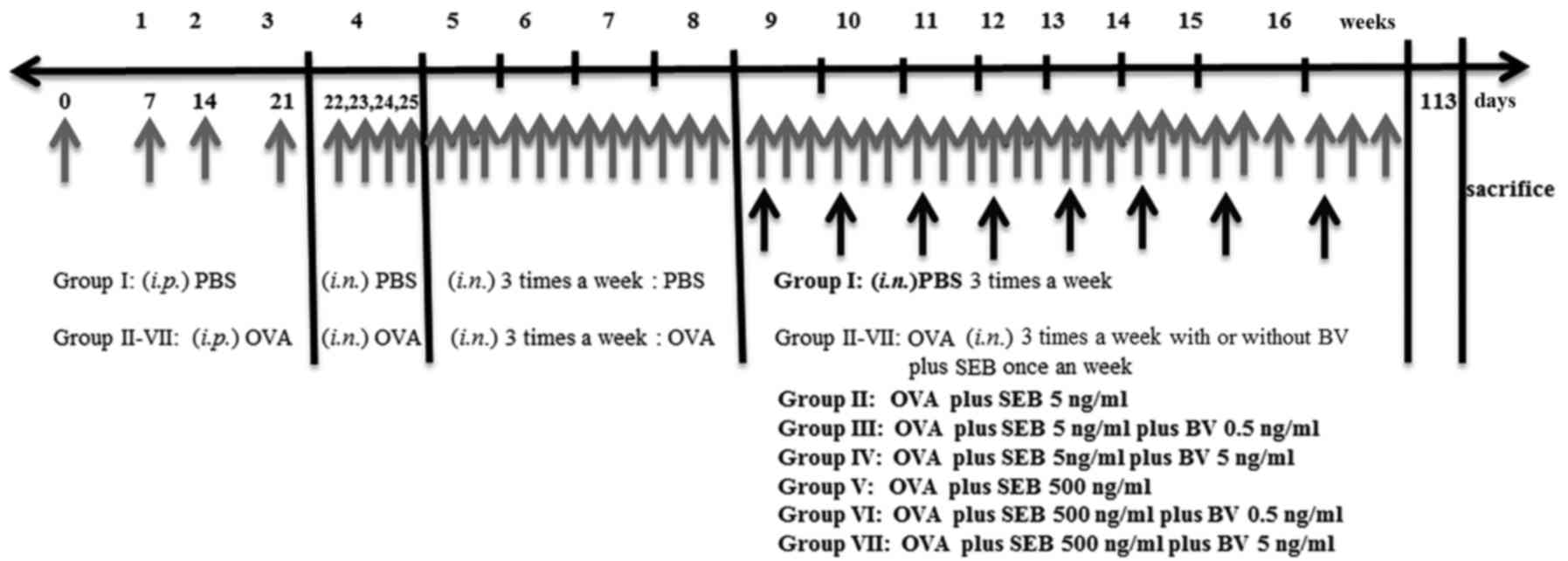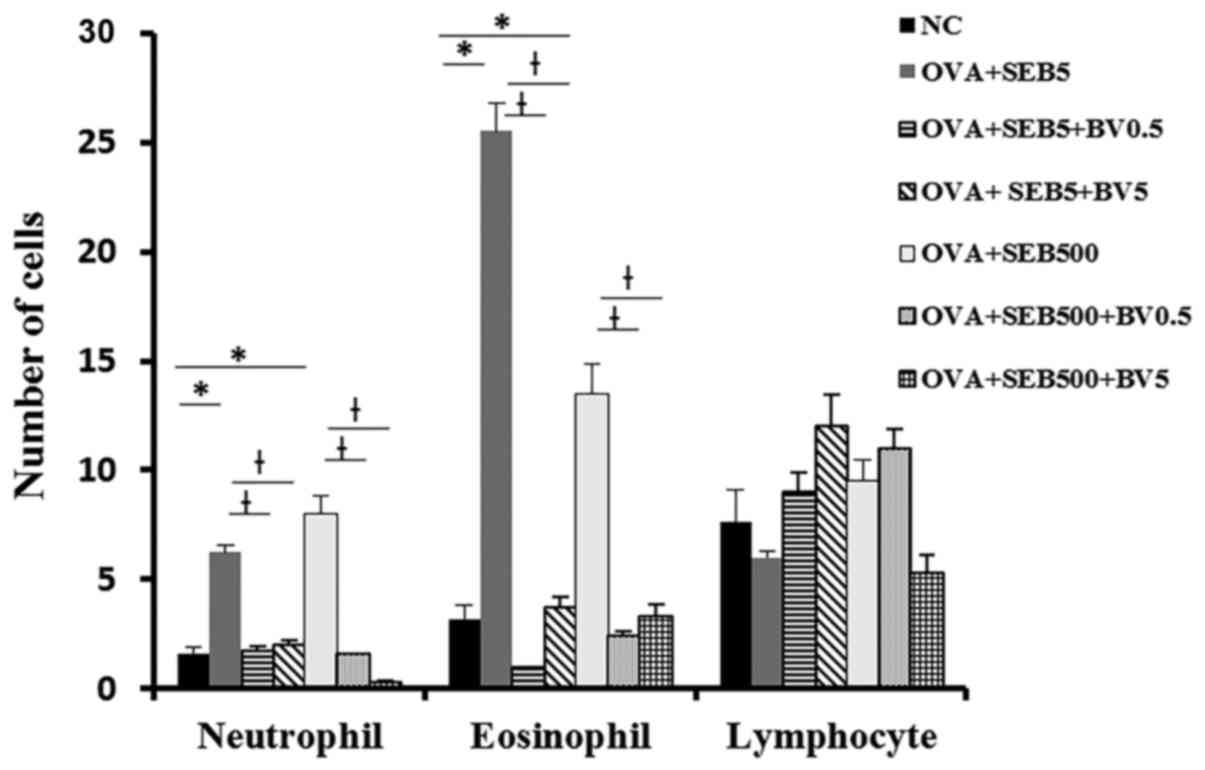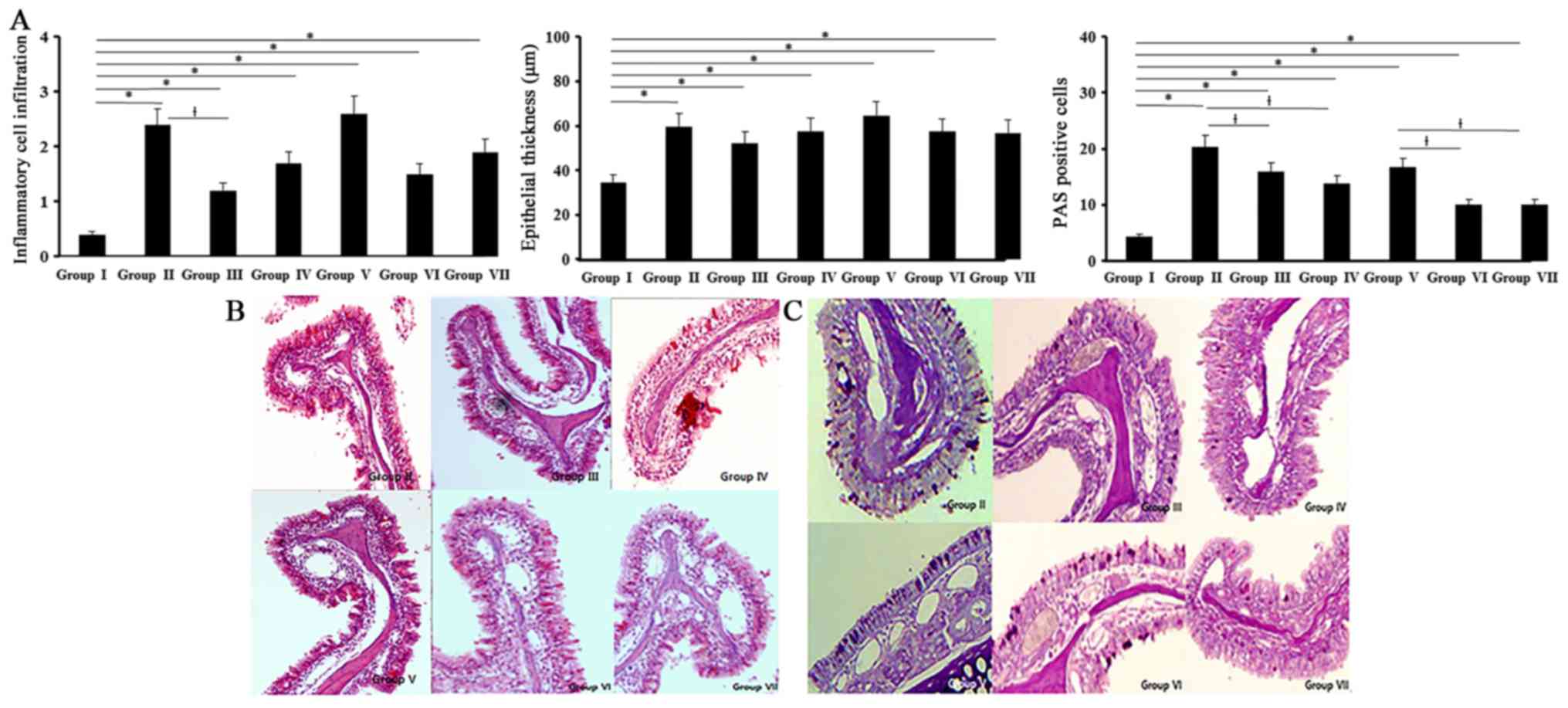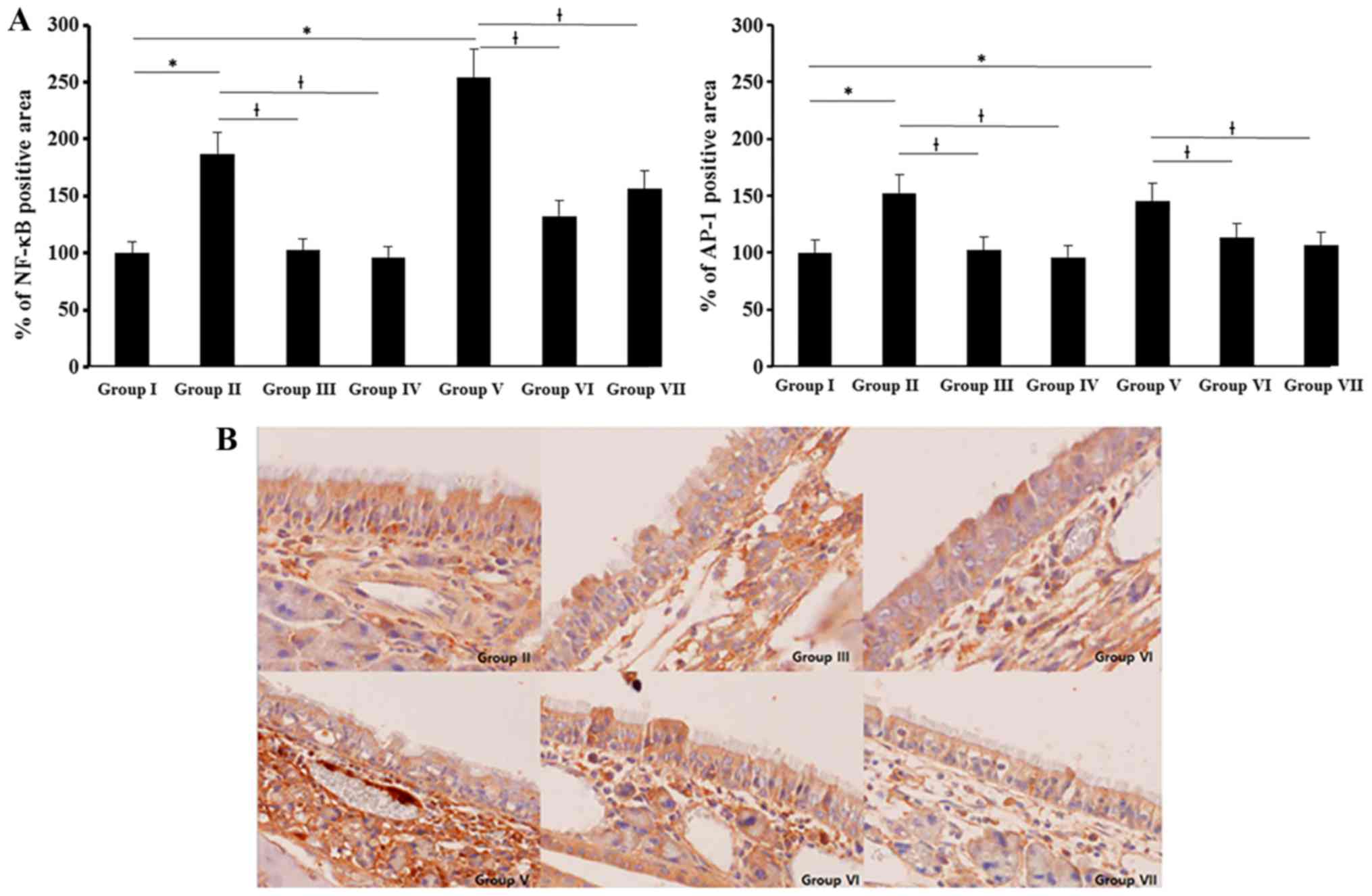|
1
|
Bachert C, Zhang N, Holtappels G, Bachert
C, Zhang N, Holtappels G, De Lobel L, van Cauwenberge P, Liu S, Lin
P, et al: Presence of IL-5 protein and IgE antibodies to
staphylococcal enterotoxins in nasal polyps is associated with
comorbid asthma. J Allergy Clin Immunol. 126:962–968. 2010.
View Article : Google Scholar : PubMed/NCBI
|
|
2
|
Wang X, Du J and Zhao C: Bacterial
biofilms are associated with inflammatory cells infiltration and
the innate immunity in chronic rhinosinusitis with or without nasal
polyps. Inflammation. 37:871–879. 2014. View Article : Google Scholar : PubMed/NCBI
|
|
3
|
Ponikau JU, Sherris DA and Kita H: The
role of unbiquitous airborne fungi in chronic rhinosinusitis. Clin
Allergy Immunol. 20:177–184. 2007.PubMed/NCBI
|
|
4
|
Van Zele T, Gevaert P, Watelet JB, Claeys
G, Holtappels G, Claeys C, van Cauwenberge P and Bachert C:
Staphylococcus aureus colonization and IgE antibody formation to
enterotoxins is increased in nasal polyposis. J Allergy Clin
Immunol. 114:981–983. 2004. View Article : Google Scholar : PubMed/NCBI
|
|
5
|
Kim DW, Khalmuratova R, Hur DG, Jeon SY,
Kim SW, Shin HW, Lee CH and Rhee CS: Staphylococcus aureus
enterotoxin B contributes to induction of nasal polypoid lesions in
an allergic rhinosinusitis murine model. Am J Rhinol Allergy.
25:e255–e261. 2011. View Article : Google Scholar : PubMed/NCBI
|
|
6
|
Jang MH, Shin MC, Lim S, Han SM, Park HJ,
Shin I, Lee JS, Kim KA, Kim EH and Kim CJ: Bee venom induces
apoptosis and inhibits expression of cyclooxygenase-2 mRNA in human
lung cancer cell line NCI-H1299. J Pharmacol Sci. 91:95–104. 2003.
View Article : Google Scholar : PubMed/NCBI
|
|
7
|
Son DJ, Lee JW, Lee YH, Song HS, Lee CK
and Hong JT: Therapeutic application of anti-arthritis,
pain-releasing, and anti-cancer effects of bee venom and its
constituent compounds. Pharmacol Ther. 115:246–270. 2007.
View Article : Google Scholar : PubMed/NCBI
|
|
8
|
Kim JI, Yang EJ, Lee MS, Kim YS, Huh Y,
Cho IH, Kang S and Koh HK: Bee venom reduces neuroinflammatin in
the MPTP-induced model of parkinson's disease. Int J Neurosci.
121:209–217. 2011. View Article : Google Scholar : PubMed/NCBI
|
|
9
|
Mousli M, Bueb JL, Bronner C, Rouot B and
Landry Y: G protein activation: A receptor independent mode of
action for cationic amphiphilic neuropeptides and venom peptides.
Tends Pharmacol Sci. 11:358–362. 1990. View Article : Google Scholar
|
|
10
|
Shin JM, Jeong YJ, Cho HJ, Park KK, Chung
IK, Lee IK, Kwak JY, Chang HW, Kim CH, Moon SK, et al: Melittin
suppresses HIF-1α/VEGF expression through inhibition of ERK and
mTOR/p70S6K pathway in human cervical carcinoma cell. PLoS One.
8:e693802013. View Article : Google Scholar : PubMed/NCBI
|
|
11
|
Shin SH, Ye MK, Kim JK and Park KK: Bee
venom at different concentrations modulates the
aeroallergen-induced activation of nasal polyp epithelial cells.
Pharmacol. 91:39–47. 2013. View Article : Google Scholar
|
|
12
|
Shin SH, Kim YH, Kim JK and Park KK:
Anti-allergic effect of bee venom in an allergic rhinitis mouse
model. Biol Pharma Bull. 37:1295–1300. 2014. View Article : Google Scholar
|
|
13
|
Han S, Lee K, Yeo J, Kweon H, Woo S, Lee
M, Baek H, Kim S and Park K: Effect of honey bee venom on
microglial cells nitric oxide and tumor necrosis factor-alpha
production stimulated by LPS. J Ethnopharmacol. 111:176–181. 2007.
View Article : Google Scholar : PubMed/NCBI
|
|
14
|
Kim JY, Lee WR, Kim KH, An HJ, Chang YC,
Han SM, Park YY, Pak SC and Park KK: Effects of bee venom against
propionibacterium acnes-induced inflammation in human keratinocytes
and monocytes. Int J Mol Med. 35:1651–1656. 2015. View Article : Google Scholar : PubMed/NCBI
|
|
15
|
Kim WH, An HJ, Kim JY, Gwon MG, Gu H, Park
JB, Sung WJ, Kwon YC, Park KD, Han SM and Park KK: Bee venom
inhibits porphyromonas gingivalis lipopolysaccharides-induced
pro-inflammatory cytokines through suppression of NF-κB and AP-1
signaling pathways. Molecules. 21:pii: E1508. 2016. View Article : Google Scholar
|
|
16
|
Shin SH and Ye MK: The effect of
nano-silver on allergic rhinitis model in mice. Clin Exp
Otorhinolaryngol. 5:222–227. 2012. View Article : Google Scholar : PubMed/NCBI
|
|
17
|
Saini SS, Peterson JW and Chopra AK:
Melittin binds to secretory phospholipase A2 and inhibits its
enzymatic activity. Biochem Biophys Res Commun. 238:436–442. 1997.
View Article : Google Scholar : PubMed/NCBI
|
|
18
|
Fujioka S, Niu J, Schmidt C, Sclabas GM,
Peng B, Uwagawa T, Li Z, Evans DB, Abbruzzese JL and Chiao PJ:
NF-kappaB and AP-1 connection: Mechanism of NF-kappaB-dependent
regulation of AP-1 activity. Mol Cell Biol. 24:7806–7819. 2004.
View Article : Google Scholar : PubMed/NCBI
|
|
19
|
Park HJ, Son DJ, Lee CW, Choi MS, Lee US,
Song HS, Lee JM and Hong JT: Melittin inhibits inflammatory target
gene expression and mediator generation via interaction with
IkappaB kinase. Biochem Pharmacol. 73:237–247. 2007. View Article : Google Scholar : PubMed/NCBI
|















